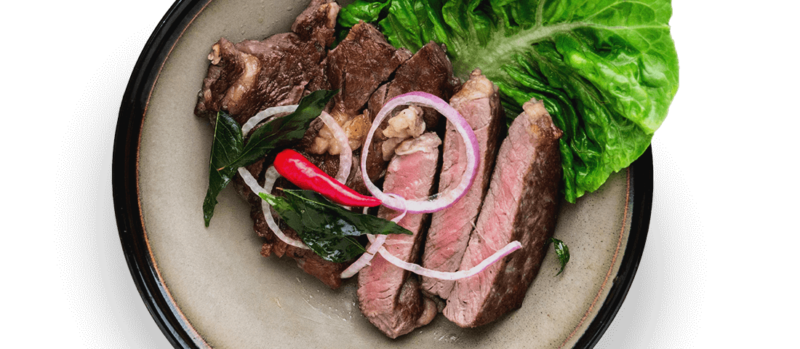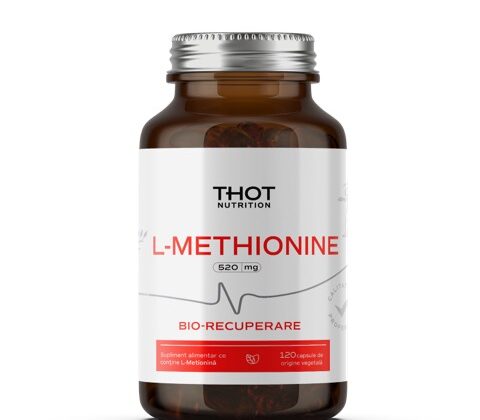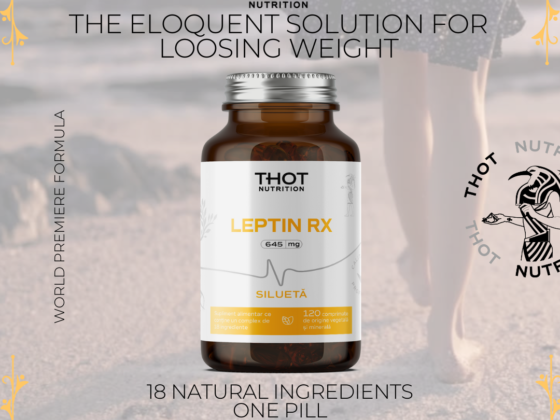Table of Contents
- What is The Ketogenic Regime?
- What isn’t The Ketogenic Regime?
- Definition of Terms in The Ketogenic Diet
- Ketosis Levels Can Be Classified As Follows, According To Blood Ketone Levels:
- The mechanism of action in Keto-genesis
- Methods to reach Ketosis
- Macronutrients in Ketogenic Nutrition
- Micronutrients in Ketogenic Nutrition
- The Main Types of Ketogenic Diets:
Overview of the article:
· The article aims to explain the main notions, mechanisms and tools that are used in the ketogenic diet, as well as the main types of ketogenic nutrition.
· We will find out what the ketogenic regime is, as well as ketosis, ketogenesis, ketones.
· We will find out what is the scientific mechanism underlying this diet.
· We will see which are the main macro- and micro-nutrients.
What is The Ketogenic Regime?
- The ketogenic diet aims to produce ketones by the body and use them as the main source of energy[1]. For this process to take place, it is necessary to reach the state of ketosis[2].
- In short, the ketogenic diet is a carbohydrate restricted diet (on average no more than 25g / day) that is used for weight loss by activating the fat burning mechanism and using fats as a fuel instead of sugars (simple or complex carbohydrates). At the same time, it is a diet that includes a very large amount of animal or vegetable fats, preferably in the most unprocessed form, whether we are talking about saturated or unsaturated fats. The diet accepts dairy products, but not refined, esterified or hydrogenated polyunsaturated fats, also known as Trans-Fats. It is a diet in which complex fatty acids are extracted from fats during ketogenesis and are used by the body as a source of cellular energy. The body can use sugars (carbohydrates) or ketones (fats) for energy. The two energy sources are interchangeable, but there are some differences.
- There are several rumors that this type of diet is unhealthy and involves risks. I would say that any type of diet, especially extreme diets, can present serious health risks, but it is a good time to demystify a large part of preconceptions related to this nutritional model that originates from the Paleo diet (Paleo-nutrition).
- The Ketogenic regimen has been used to treat epilepsy (especially in children) and has gained ground as a tool to regulate insulin levels for patients with type II diabetes (as this regimen decreases the need for insulin therapy).[3]
What isn’t The Ketogenic Regime?
- The ketogenic diet is not just a low carb diet (high fat – low carb diet), as diets of that type are not based on reducing the fats so much that the body enters the state of ketosis. These diets fall somewhere in a gray area, where the body does not make clear the transition from one energy source to another.
- It is not a paleogenic diet (Paleo Nutrition[4]) Both diets encourage a higher percentage of healthy fats and lower carbohydrates. Both diets encourage the consumption of unprocessed foods and discourage the consumption of cereals and legumes. The main differences are that the paleo diet accepts carbohydrates from fruits and vegetables and does not accept dairy products. For more details, read the article here: (Also in Romanian Language: The comparison between the ketogenic and the paleogenic diet)
- It’s not the Atkins diet either, although it is very similar, Dr. Atkins being one of the first to make us look at fats differently, but the goals of the two are different, and the latter aims to reintroduce carbohydrates, along the way, to an acceptable level.
- It is not a diet based on animal products (meat, eggs and dairy), although they are part of the ketogenic diet. However, there are enough high-fat plant foods that allow vegetarians to adopt a ketogenic diet.
- It is not the ketoacidosis state, found in diabetic patients. Not to be confused. Ketoacidosis is a pathological condition in which the body’s natural mechanisms no longer function normally, and the ketone bodies produced in order to use other energy source are in much larger quantities than would be achieved through a ketogenic diet.
- See Article about Keto Rules – Basic rules in ketogenic diets
Definition of Terms in The Ketogenic Diet
- To understand how this diet works, it is necessary to first define the terms encountered in the mechanism of action: keto, ketosis, ketogenic, ketone, ketone bodies. The term “keto” is an abbreviation of “ketogenic”. It defines the body’s ability to produce ketones using fat. When the level of ketones in the blood exceeds 0.5 mMol / L, the body reaches the state of ketosis.
- This state of ketosis can be achieved in two ways: by diet and supplements or by fasting. Through diet and supplements, although the body is in ketosis, as we have ketones from exogenous intake, both from food fats and supplements (such as HVMN Ketone, ketones salts or oils containing medium chain triglycerides – MCT oils, Brain Octane Oil).
- The body does not synthesize its own ketones (What are ketones?), as happens in fasting. Thus, a body in ketosis is not necessarily a ketogenic body. A ketogenic body, on the other hand, is in ketosis.
- Although the term ketones and ketone bodies are often misused to define the same thing, their meaning is slightly different.
- Ketones are organic compounds that have in their structure a carbonyl group (a carbon-oxygen double bond) linked to two HC groups.
- Not all ketones are ketone bodies, and vice versa. Ketone bodies are produced by the liver through the metabolism of fats. When we talk about ketone bodies, we are referring to acetone, acetoacetic acid (AcAc) or beta-hydroxybutyric acid (BHB) – the main ketone body in the blood, the latter not being technically a ketone. Both AcAc and BHB-pass easily through the cell membrane, being an excellent source of energy for both the body and the brain.
- See article What are ketones? (Also in Romanian language: Ketones).
Ketosis Levels Can Be Classified As Follows, According To Blood Ketone Levels:
- No ketosis: under 0.5 mmol/L BHB
- Light Ketosis: 0.5 – 1 mmol/L BHB
- Moderate Ketosis: 1 – 1.5 mmol/L BHB
- Hard Ketosis (Bio-Reset/Fasting): 1.5-3 mM BHB
- Pathological Ketosis (Ketoacidosis): over 3 mmol/L BHB
The mechanism of action in Keto-genesis
In the absence of carbohydrates and after consuming the glycogen stores in the liver, the body moves on to the next source of energy: fats. They are broken down in the liver into fatty acids and glycerol. Fatty acids are then transformed through a process called ketogenesis into ketone bodies. Ketogenesis occurs primarily in hepatocyte mitochondria. Acetoacetate (AcAc) is the precursor of the other two amino acids, acetone and beta-hydroxybutyric acid (BHB). It can be converted to acetone spontaneously or by decarboxylation, and the acetone can be further broken down into lactate, pyruvate or acetate, which can also be used as an energy source. The ketone bodies are then transported to active cells, such as muscle cells and neurons, where they are transformed by ketolysis into acetyl-CoA, thus being used as an energy source at the mitochondrial level. AcAc and BHB are therefore absorbed into the cell, where they are used to produce energy (ATP).
Methods to reach Ketosis
As mentioned earlier, the state of ketosis can be achieved by three different methods: by fasting, using a ketogenic diet or supplementing with exogenous ketones.
During the night, when we are practically in a fasted state, the level of ketones is at 0.1-0.3 mmol / L BHB, and, if the fast is prolonged, the blood values increase, reaching after a few days of fasting even at 0.5- 1 mmol / L BHB. This is called physiological ketosis by scientist Hans Krebs[5]. It is important to note that each body reaches the state of ketosis during its specific time. Some can reach this state in a few days, others in a few weeks or even months.
In the long run, fasting is obviously not a solution to staying in ketosis, so the ketogenic diet becomes a solution to staying in a mild state of permanent ketosis, with BHB levels between 0.4-1 mmol / L[6]. Another way to stay in ketosis is to use exogenous ketones. Studies show that ketosis can be achieved with BHB levels of 0.5-0.9 mmol / L when given ketones in the form of medium chain salts or triglycerides (MCT oils or Brain Octane Oil) [7] and over 1 mmol / L. BHB in case of administration of ketone ester such as HVMN Ketone[8]. There are also pathological situations in which the state of acid ketosis is reached. I’m talking about diabetic or alcoholic ketoacidosis. In these cases, very high BHB values in the blood are reached, above 3 mmol / L BHB, values that, in the case of healthy people, should not be reached, or, if they are reached, immediate measures are to be taken in order not to stay there for a long time (electrolytes and carbohydrates / sugars are administered to lower the level of ketones in the blood (honey, glucose, etc.).
In the case of diabetic ketoacidosis, which occurs mainly in type 1 diabetes, insulin deficiency prevents the use of glucose by the body’s cells, and the glucose remains in the blood. Paradoxically, although blood glucose levels are high, the body’s cells are not nourished, and the body goes into alert state and begins to use fat as an energy source.
This is the mechanism by which ketogenesis is triggered, but because the problem persists, the mechanism does not have a feedback signal to stop the production of ketone bodies, which leads to high values of ketones in the blood (over 5 mmol / L BHB) and then metabolic acidosis occurs (pH decreases due to the accumulation of ketone bodies, which are acidic).
Elevated blood glucose levels lead to increased diuresis to eliminate excess glucose, but along with glucose, water and electrolytes are eliminated, causing severe imbalances, which can range from nausea and vomiting to coma. This is the context in which, in the medical world, ketosis has become something “bad” and dangerous. Sodium is the most widely used and therefore it is important to quickly restore electrolyte levels, especially with NaCl (table salt).
In the case of alcoholic ketoacidosis, the classic picture consists of alcohol consumption accompanied by malnutrition. Ketone bodies are produced by the metabolism of alcohol in the liver. There is also a higher level of glucose in the blood, and the symptoms are milder than in diabetics.
Macronutrients in Ketogenic Nutrition
For the ketogenic diet to work, it is essential that the macronutrients, ie the part of the food used for energy, be in optimal proportion. When we talk about macronutrients, we refer to carbohydrates (cereals, fruits, pasta, bread, potatoes, sweets), lipids (oils, butter, nuts, seeds, avocados) and proteins (meat, dairy, eggs). Things may be a little vague, given that this proportion can be expressed using percentages, ratios, and the mass of macronutrients.
See the article: Basic rules in ketogenic diet.
Thus, in a standard ketogenic diet, daily consumption of macronutrients can be expressed as follows:
- 5% carbohydrates, 20% protein, 75% lipids or
- 2-4 g of lipids per 1 g of carbohydrates plus protein or
- maximum 20-30 g of carbohydrates (some sources allow the consumption of up to 50 g of carbohydrates)
So, if you are familiar with the basic nutrition pyramid so far, in the ketogenic diet you should completely forget about it.
Carbohydrates
The main role of carbohydrates is to source energy: burning one gram of glucose generates 4.5 kcal. These are not essential, as they can be synthesized by the body when needed. Carbohydrates have other roles in the body, such as structure, deposit (in the form of glycogen), etc.
Carbohydrates are organic molecules composed of carbon, hydrogen and oxygen atoms, with a hydrogen:oxygen ratio of 2:1. They are found in the form of simple molecules called monosaccharides (glucose, fructose, galactose), oligosaccharides (with the disaccharides maltose, lactose, sucrose) and polysaccharides (starch, glycogen, cellulose).
Once ingested, complex carbohydrates are broken down during digestion into simple molecules, which are then absorbed into the bloodstream. As glucose enters the bloodstream, insulin levels rise to allow glucose to enter the cell. This mechanism interrupts the use of fats for energy and thus ketosis is interrupted.
What happens to excess glucose? Some of it is stored as glycogen in the liver or in the muscles as an energy reserve, but once it exceeds the body’s storage capacity (which is not large, the reserve being for extreme situations, not for a lifetime), Glucose is converted into fat (triglycerides), which is deposited.
The human body does not store sugar, only fat.
In a ketogenic diet, carbohydrate intake should be very low (5% or 20-30 g) to remain in the ketosis state.
Blood glucose (glycemic level) can be measured with a glucometer. Normal blood sugar levels are 70-110 mg / dl on an empty stomach[9]. The key terms in terms of carbohydrates are the total amount of carbohydrates, the net amount of carbohydrates (excluding the fibers that accompany them), the glycemic index (the rate at which blood sugar rises from ingestion).
Dietary fiber from carbohydrates are plant molecules that cannot be completely broken down so they are not absorbed into the body. They either remain in the gut and ferment, thus contributing to a healthy gut microflora, or are excreted in the feces.
Fiber is an important part of this diet, contributing to a healthy gut; they also contribute to the feeling of satiety. There are different approaches to the number of calories attributed to fiber. Depending on their complexity, three options can be addressed: either it counts as carbohydrates in general, or it halves the number of calories, or, in the case of completely indigestible fiber, it does not count calories.
The net amount of carbohydrates (or sugars) refers to the total amount of carbohydrates minus the amount of fiber. Studies show that most fiber is indigestible and does not increase blood sugar levels after ingestion[10] and does not alter the level of ketones in the blood[11].
The glycemic index is the rate at which glucose rises in the blood, on a scale of 1 to 100, where the reference point is pure glucose (100), followed by other foods. The glycemic load of food takes into account both the glycemic index and the net carbohydrate content. There are foods that, although they have a high glycemic index, have very little sugar.
Proteins
Protein accounts for 20% in the ketogenic diet. Although they can be used as a source of energy, this is not their main role. They play a very important structural role in cell membranes and are involved in many metabolic processes. In the ketogenic diet, protein helps maintain optimal muscle mass. Initially, a consumption of about 1 g / kg body weight is recommended, some individuals requiring more.
But, most importantly, the body’s need is not for protein, but for amino acids. For more detailed information on the subject, please read the master article: Amino acids in nutrition.
Exceeding these recommendations, it is very possible that the ketosis process will be interrupted, because the excess proteins begin to be transformed into glucose through gluconeogenesis and used as fuel.
Lipids
Lipids (or fats) are the main source of energy in this diet. In short, lipids are made up of a series of triglycerides. In addition to their energetic role, they play a very important role in the structure and function of the human body.
The general term “fat” is used to refer to different types of tissues and fat molecules. To better understand their metabolism, we need to understand what they are and what their role is.
Adipose tissue is made up of fat cells, that is, fat cells, which have fat stored inside for energy resources, in the form of triglycerides. This is what we call body fat.
Fat cells are individual cells that store this fat.
Lipids are fat molecules, which is a generic term used for different types of molecules. They are fattened in molecular form as mono-, di-, tri-glycerides, phospholipids and cholesterol.
Triglycerides are fat molecules made up of three fatty acid molecules linked to a glycerol molecule, which acts as the “skeleton” of the fat molecule.
Fatty acids are molecules made up of several carbon atoms linked together and that have a carboxylic acid in their structure at one end. Depending on the number of carbon atoms, fatty acids can be long chain (over 13 atoms), medium (8-12) or short (less than 5).
The number of bonds between atoms matters, as they are metabolized differently depending on the length of the chain. Those with long chains reach the lymphatic system from the intestine, from where they reach the blood. Those with medium or short chains reach from the intestine to the liver, where, if ingested in large quantities, the liver metabolizes them directly into ketones, without the need for a very large restriction of carbohydrates.
Consumption of medium chain fatty acids (MCT oils) is part of the ketogenic diet, but in large quantities, they can cause abdominal discomfort and diarrhea, so moderate consumption is recommended.
In reality, everyone initially has a lower or higher tolerance to these medium-chain fats (generally coconut oil and its derivatives:
- Caproic acid (C6)
- Caprylic Acid (C8)
- Capric Acid (C10)
- Lauric Acid (C12)
See article – (Also in Romanian Language: The Ultimate Guide to MCT oil and MCT Supplements).
Sources of medium chain fatty acids can be in their raw form, such as coconut oil, or supplements such as XCT oil or Brain Octane Oil or HVMN Ketone, each with its own advantages and disadvantages.
They can also be unsaturated (with one or more carbon bonds) or saturated (without carbon bonds). Saturated fatty acids are solid at room temperature (butter, lard, coconut oil), and are stable at higher temperatures.
They have been mistakenly associated with cardiovascular disease, and the recommendations indicate limited consumption, but recent studies show that they may even benefit the circulatory system by increasing HDL (“good” cholesterol)[12]. Unsaturated fatty acids can be monounsaturated (a single double bond between carbon atoms) or polyunsaturated (multiple double bonds) and are liquid at room temperature (olive oil, seed oils).
See article – (Also in Romanian Language: What’s the Difference Between Saturated and Unsaturated Fat?). Other useful articles on these differences are available on the Internet[13]
Their consumption is encouraged, so that benefits have been reported in terms of effects on the cardiovascular system (lower triglyceride levels in the blood)[14].
There are also “trans” fatty acids. These are indeed to be avoided[15]. They are found in margarine-like fats and are obtained by artificially adding a hydrogen molecule to their structure to solidify liquid oils, but also to extend the shelf life. Eliminate or avoid, as much as possible, the consumption of these and pastry or processed products, vegetable oils used for frying, which usually contain hydrogenated vegetable fats and choose fats from natural sources, as little chemically or thermally processed.
Essential fatty acids, that is, those that our body cannot synthesize are very important in a ketogenic diet. These are omega-3, omega-6 and omega-9 acids, which must be supplemented by the diet and, moreover, must be in an optimal ratio for the proper functioning of the nervous system. Sources of essential fatty acids are fish and fish oil, flaxseed oil, etc.
Overall, recent studies show that lipid consumption is not associated with cardiovascular disease[16]. Our recommendations are that in the ketogenic diet you should choose healthy fats, the sources should vary, so that it is a balanced diet, and the choice and administration of ketones as supplements should be done in moderation, according to the needs and individual purpose of the ketogenic diet.
Micronutrients in Ketogenic Nutrition
Micronutrients are elements of our diet, which, although we do not use them as energy resources and the amount we consume is much smaller compared to macronutrients, their role in our body is essential. You can be overweight or obese and at the same time be malnourished or undernourished. Why? Because nutrition is not about food, it’s about nutrients.
Each micro-element has its extremely important role for the body to function optimally, at its highest level. Minerals and vitamins are the basic constituents in the field of micronutrients, but the smaller their quantity, the greater their importance and the science behind each element. Nothing in excessive smaller or larger quantities brings benefits, on the contrary, sometimes both lack and excess can have serious consequences on the body.
In the ketogenic diet, there are certain micronutrients that receive special attention, because this type of diet has a direct impact on them in the body.
Given that this diet restricts the intake of fruit to a large extent, it is important to consider supplementing with vitamins and antioxidants.
The ketogenic diet can also lead to increased elimination of essential minerals from the body, such as sodium, potassium, magnesium and calcium[17]. Dupa adaptarea la noul regim alimentar, organismul face fata mai bine in metabolizarea si recuperarea acestora.
Sodium is the main ion present in extracellular fluid. Its role is essential in maintaining blood pressure, water levels in the body, blood pH, the potential for action of the cell membrane and the control of the nervous system. At the beginning of the ketogenic diet, the elimination of sodium is increased, so supplementing it by adding non-iodized salt, such as Himalayan salt or sea salt is important and can reduce the symptoms associated with sodium deficiency in the body, such as fatigue, lethargy, drowsiness, etc.
Potassium is the intracellular counterpart of sodium, being the main cation inside the cell. Its main functions are to maintain the membrane potential at the cellular level and to transmit the electrical inflow into the neuronal and muscle cells. Like sodium, it can be reduced at the beginning of the diet and needs to be supplemented. One option is to introduce foods high in potassium, such as nuts, avocados and green vegetables.
Magnesium is extremely important for the proper functioning of the nervous, immune and muscular systems. Increased elimination may also occur, and to supplement with magnesium, it is recommended to eat fish high in fat, seeds and green vegetables.
Calcium it is an element with multiple roles in the body. Its importance in muscle contraction, in the health of the skeletal system, but also of the nervous and cardiovascular system are only a small part of the mechanisms in which calcium is involved. It is important to note that we need ionic calcium, which can be used in the body. Thus, we recommend the consumption of leaves, salads, cocoa beans and superfoods such as spirulina and chorella.
The Main Types of Ketogenic Diets:
· MKD – Mild Ketogenic Diet: Here we have few carbohydrates (5-15%), a lot of fat (65-75%) and protein (20%).
· SKD – Standard Ketogenic Diet: Here we have very little carbohydrate (5%), a lot of fat (75%) and protein (20%).
· CKD – Cyclical ketogenic Diet: This diet almost completely restricts carbohydrates and sugars for 5-6 days and is then followed by a 2-day break in which few carbohydrates can be consumed.
· TKD – Targeted ketogenic diet: This diet does not use carbohydrates or sugars, except for very well-chosen moments to counter-balance certain intense energy needs (example: certain cures or workouts).
· HPKD – High-protein ketogenic diet: A kind of Atkins or keto diet with a high percentage of 60% protein, 35% fat and 5% carbohydrates.
There are other types of ketogenic diets. Ex: Mediterranean Ketogenic Diet. These are adaptations to the genotype of the inhabitants of a certain geographic area or specific to a targeted result.
__________________________
References:
[1] Fuel metabolism in starvation – Department of Medicine, Harvard Medical School, Boston, Massachusetts 02115, USA. gcahill1@cheshire.ne
[3] Effectiveness and Safety of a Novel Care Model for the Management of Type 2 Diabetes at 1 Year: An Open-Label, Non-Randomized, Controlled Study. Diabetes Ther.
[4] Paleogenic diet or Paleolithic diet; how our ancestors fed for millions of years; or what we think they’ve been eating for so long.
[5] Krebs, H.A. (1966). The regulation of the release of ketone bodies by the liver. Adv. Enzyme Regul. 4, 339-354.
[6] Volek, J.S., and Phinney, S.D. (2012). The Art and Science of Low Carbohydrate Performance.
[7] Rodger, S., Plews, D., Laursen, P., and Driller, M. (2017). The effects of an oral β-hydroxybutyrate supplement on exercise metabolism and cycling performance.
[8] Cox, P.J., Kirk, T., Ashmore, T., Willerton, K., Evans, R., Smith, A., Murray, Andrew J., Stubbs, B., West, J., McLure, Stewart W., et al. (2016). Nutritional Ketosis Alters Fuel Preference and Thereby Endurance Performance in Athletes. Cell Metabolism 24, 1-13.
[9] Diabetes UK Website: Blood Sugar Level Ranges
[10] Fiber and Prebiotics: Mechanisms and Health Benefits. Nutrients 5, 1417-1435.
[11] Pfeifer, H.H., and Thiele, E.A. (2005). Low-glycemic-index treatment: a liberalized ketogenic diet for treatment of intractable epilepsy. Neurology 65, 1810-1812.
[12] Mente, A, Dehghan, M, Rangarajan, S, et al. Association of dietary nutrients,with blood lipids and blood pressure in 18 countries: a cross-sectional analysis from the PURE study, 2017. The Lancet. Diabetes & endocrinology 5, 774-787.
[13] The Difference Between Saturated and Unsaturated Fats
[14] Volek, J.S., Gomez, A.L., and Kraemer, W.J. (2000). Fasting lipoprotein and postprandial triacylglycerol responses to a low-carbohydrate diet supplemented with n-3 fatty acids. J. Am. Coll. Nutr. 19, 383-391.
[15] FDA Website: Final Determination Regarding Partially Hydrogenated Oils (Removing Trans Fat).
[16] Dehghan, M, Mente, A, Zhang, X, et al. Associations of fats and carbohydrate intake with cardiovascular disease and mortality in 18 countries from five continents (PURE): a prospective cohort study, 2017. Lancet.
[17] Rabast, U., Vornberger, K.H., and Ehl, M. (1981). Loss of weight, sodium and water in obese persons consuming a high- or low-carbohydrate diet. Ann. Nutr. Metab. 25, 341-349.










